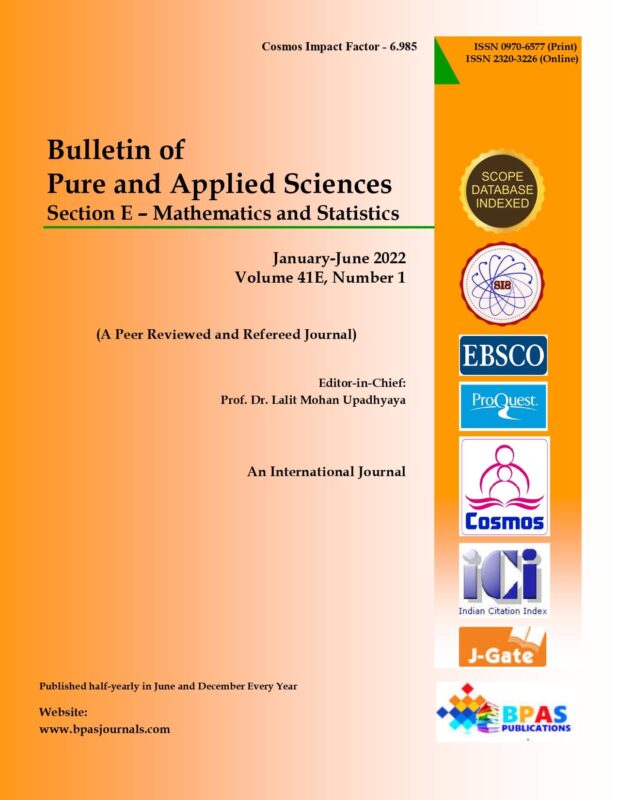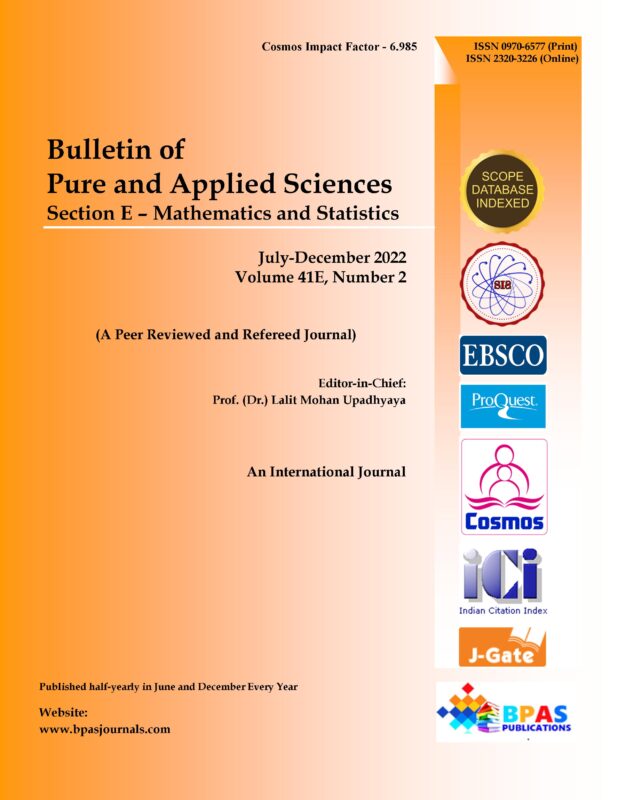View cart “Estimation of the Population Mean By Developing a New Estimator” has been added to your cart.
Theory of Complex Numbers: Gross error in Mathematics and Physics
9.38$
Year : 2022,
Volume & Issue : BPAS-Maths & Stat 41E(1), JAN-JUN 2022
Page No. : 61-68,
Article Type : Original Aticle
Article DOI : 10.5958/2320-3226.2022.00009.1 (Received on 18.03.2022/ Revised on 07.04.2022/ Accepted on 17.05.2022 Online First Published on June 15, 2022 at https://www.bpasjournals.com/)
Categories: 41E(1), JAN-JUN 2022, BPAS-Mathmatics & Statics
Description
Description
Temur Z. Kalanov
Author’s Affiliation : Home of Physical Problems, Yozuvchilar (Pisatelskaya) 6a, 100128 Tashkent, Uzbekistan
Corresponding Author : Temur Z. Kalanov, Home of Physical Problems, Yozuvchilar (Pisatelskaya) 6a, 100128 Tashkent, Uzbekistan,
E-Mail:-tzk_uz@yahoo.com, t.z.kalanov@mail.ru, t.z.kalanov@rambler.ru
Abstract
The critical analysis of the starting point of the theory of complex numbers is proposed. The unity of formal logic and rational dialectics is methodological basis of the analysis. The analysis leads to the following main results: (1) the definition of a complex number contradicts to the laws of formal logic, because this definition is the union of two contradictory concepts: the concept of a real number and the concept of a non-real (imaginary) number - an image. The concepts of a real number and a non-real (imaginary) number are in logical relation of contradiction: the essential feature of one concept completely negates the essential feature of another concept. These concepts have no common feature (i.e. these concepts have nothing in common with each other), therefore one cannot compare these concepts with each other. Consequently, the concepts of a real number and a non-real (imaginary) number cannot be united and contained in the definition of a complex number. The concept of a complex number is a gross formal-logical error; (2) the real part of a complex number is the result of a measurement. But the non-real (imaginary) part of a complex number is not the result of a measurement. The non-real (imaginary) part is a meaningless symbol, because the mathematical (quantitative) operation of multiplication of a real number by a meaningless symbol is a meaningless operation. This means that the theory of complex number is not a correct method of calculation. Consequently, mathematical (quantitative) operations on meaningless symbols are a gross formal-logical error; (3) a complex number cannot be represented (interpreted) in the Cartesian geometric coordinate system, because the Cartesian coordinate system is a system of two identical scales (rulers). The standard geometric representation (interpretation) of a complex number leads to the logical contradictions if the scales (rulers) are not identical. This means that the scale of non-real (imaginary) numbers cannot exist in the Cartesian geometric coordinate system. Consequently, the theory of complex numbers and the use of the theory of complex numbers in mathematics and physics (electromagnetism and electrical engineering, fluid dynamics, quantum mechanics, relativity) represent a gross methodological error and lead to gross errors in mathematics and physics.
MSC: 00A05, 00A30, 00A35, 00A69, 00A79, 03A10, 03F55, 51P05, 51N20, 51M15, 97F60, 97E30, 03B99, 97A99, 97F50.
PACS: 01.55.+b, 01.70.+w, 03.30.+p, 03.50.De, 03.65.-w, 03.65.Ca, 04.20.-q.
How to cite this article: Kalanov TZ. (2022).
Theory of Complex Numbers: Gross error in Mathematics and Physics. Bull. Pure Appl. Sci. Sect. E Math. Stat. 41E(1), 61-68.
Keywords
general mathematics, complex numbers, geometry, methodology of mathematics, mathematical physics, physics, special relativity, electromagnetism, quantum mechanics, general relativity, engineering, formal logic, dialectics, philosophy of mathematics, philosophy of science, education.



